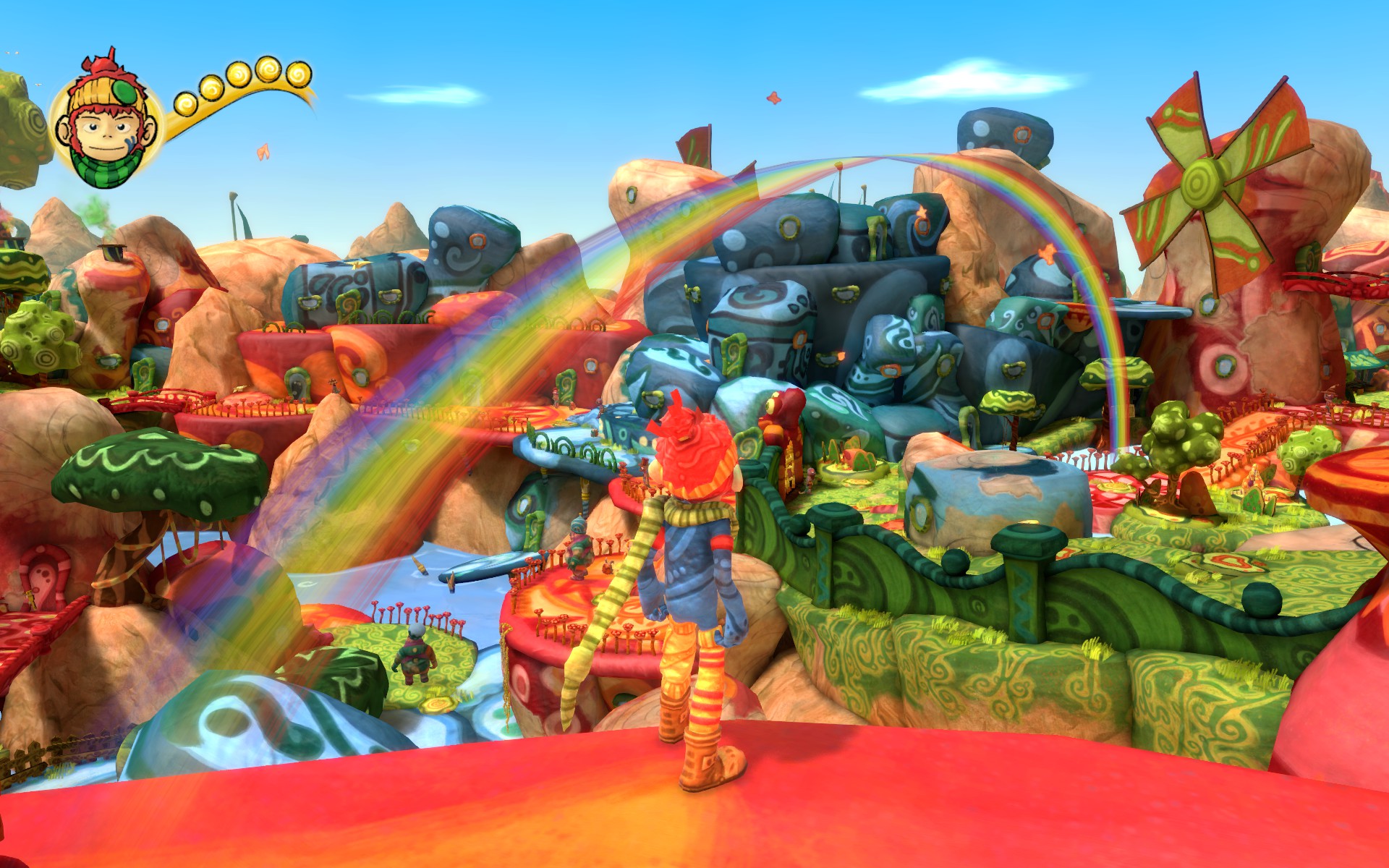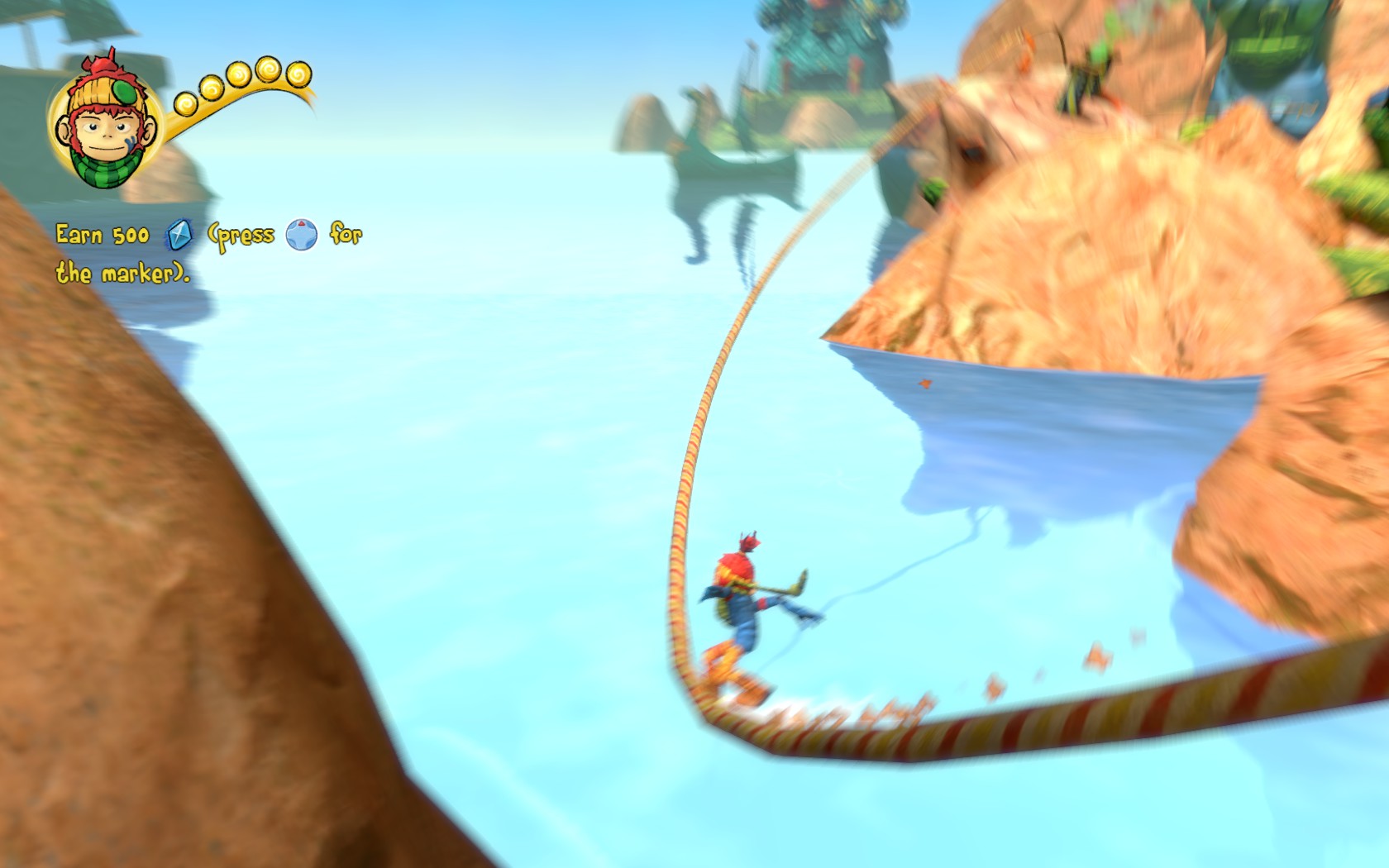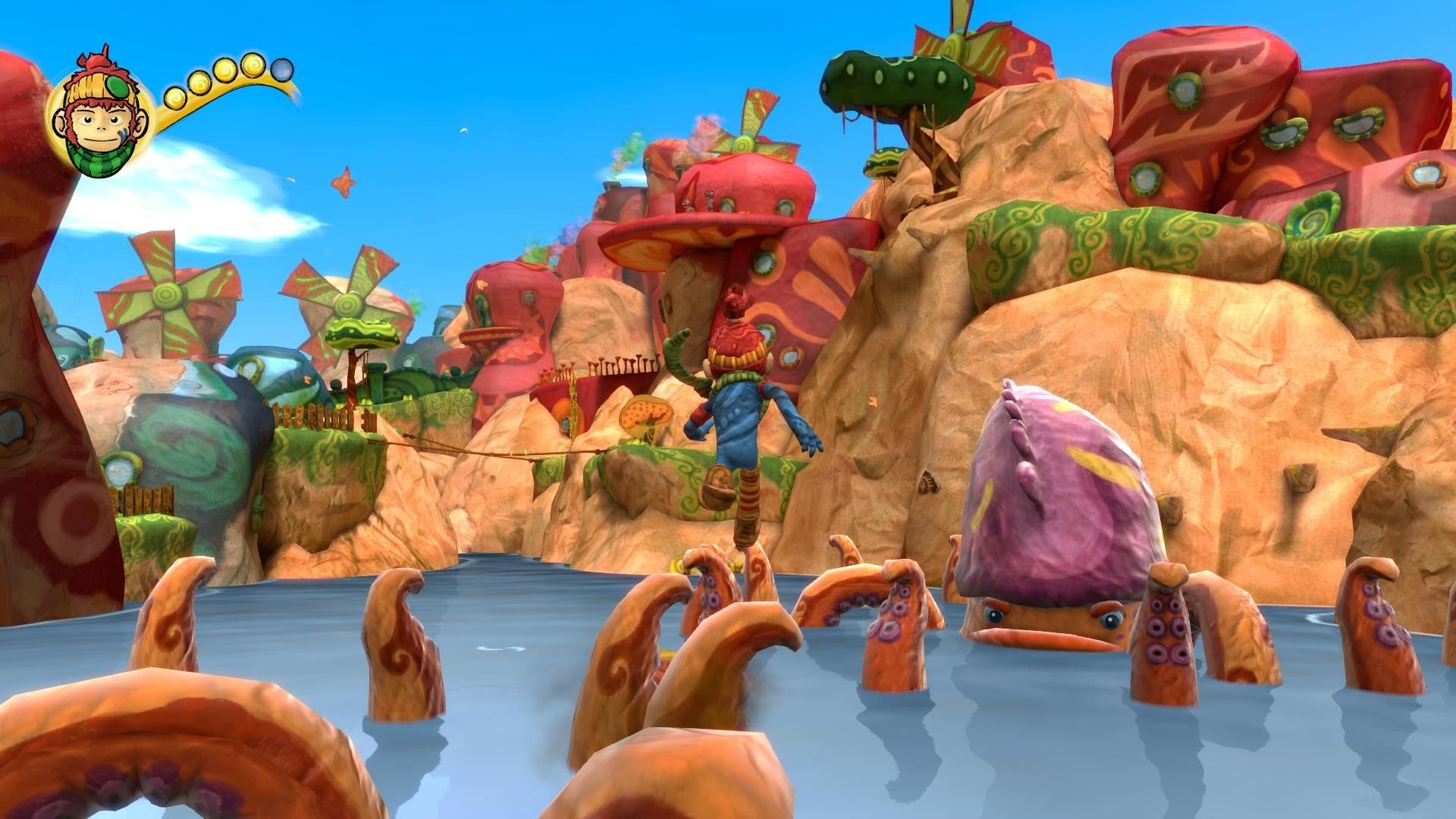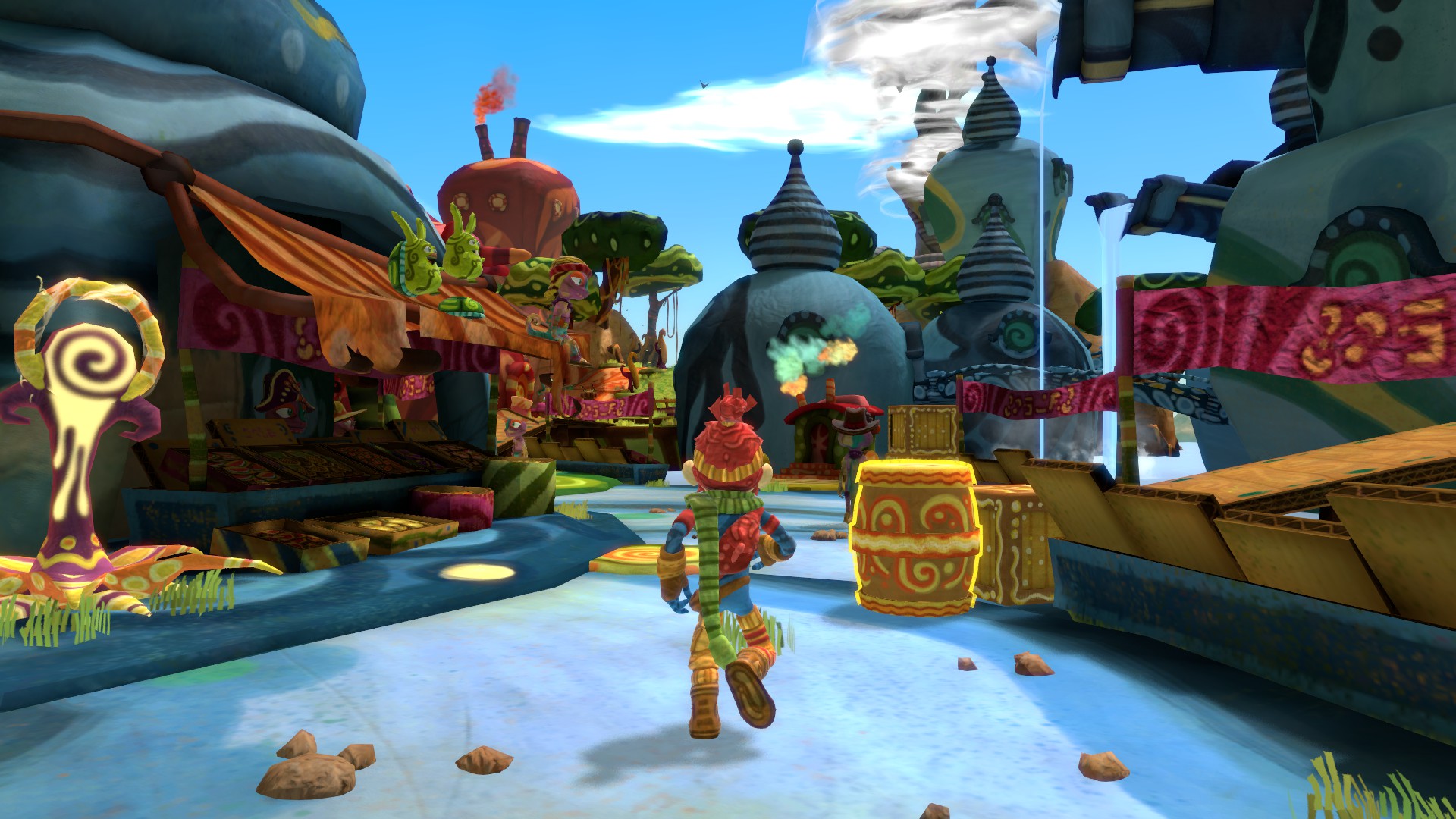The Last Tinker: City of Colors is a notable game for one reason. Not because it’s a wonderful gem everybody most play, but because it’s an absolute train wreck of a disaster. This isn’t your typical bad game though. Most games are bad because of several flaws stacking up. The Last Tinker, however, is ruined by one specific problem that weights the entire experience down. That problem is its control scheme, and its attempt at innovation.
Have you ever stopped to think about how important controls are, even a single button? Think about how standard most button layouts tend to be. Most of us use a QWERTY keyboard and video game controllers not made by Nintendo tend to be pretty similar. That standardization is often taken another step forward with control schemes. Think of how many first person shooters just copy the controls from Call of Duty. These uniform control schemes feel good, not just because we get used to them, but because they’re inherently intuitive. Why don’t more developers try to mix things up? Why not try and improve the standard formula of the control scheme?
Mimimi Productions gave us an answer to that question in 2014 with The Last Tinker. It’s a little known 3D platformer, which may surprise you. Yooka-Laylee is famous for its 2015 Kickstarter campaigning, proclaiming itself to be the return of the 3D platformer. If the market was so hungry for a new game in the genre, how did this game fly under the radar? It’s a lot like how people came to believe the point and click adventure game died a slow, painful death before Broken Age came around. The adventure genre was far from dead of course, it just wasn’t mainstream anymore.
The 3D platformer has continued on as well among the fringes of the gaming community. The problem is, while many obscure adventure games are diamonds in the rough, most 3D platformers of the last decade tend to be obscure for a reason – they’re terrible.
The Evolution of the Genre
Out of any video game genre, the 3D platformer is perhaps the one that’s been the least resistant to change. The same can be said for adventure games, but at least the idea of solving puzzles is still an attractive one. There are also companies like TellTale who continue to innovative, and the entire genre of “walking simulators” is pretty much an evolution of adventure games anyway.
But 3D platformers almost universally model themselves on one of two games: Super Mario 64 or Banjo-Kazooie. Look at any upcoming 3D platformer, either on Kickstarter or otherwise, and you’ll see they all model themselves off 20 year old games. While I and a few others still love these games, game design has progressed a long way since the days of the Nintendo 64, and the genre has failed to keep up. This has never been more apparent than with Yooka-Laylee, itself feeling like a 20 year old, slow motion car wreck.
That’s where The Last Tinker comes in. Mimimi Productions was one of the few studios developing a 3D platformer that was trying something different with the standard formula. Unfortunately for them, their tweaks have led to the worst 3D platformer of all-time.
Innovation Isn’t Always a Good Thing
The gameplay of any 3D platformer is based entirely around a handful of core mechanics. Those mechanics involve mini-games, solving puzzles, collecting items either for progression or personal satisfaction, and the one that’s front and center: jumping. That’s the meat and potatoes of any platformer, 2D or 3D. A platformer with bad jumping mechanics will always fail, regardless of the structure built on top of those mechanics. Conversely, if the structure of a platformer is crap, in the form of a bad story, uninteresting characters, bad graphics, whatever, then as long as it’s jumping mechanics are solid, it’ll at least be a passable game.
The Last Tinker finds itself in the former category. Mimimi’s big idea, their way of reinvigorating the 3D platformer, was one simple change to the jumping mechanics. Rather than hitting a jump button every time you want to jump like any other platformer, here, you simply hold down the sprint button, and the game will make all the jumps, all the ledge grabs, and perform all the rope sliding sections for you, automatically.
“Okay, so what exactly are you supposed to do if there’s not actually any jumping?” you ask. That’s the point, there is nothing to do. The Last Tinker is a game about holding down a sprint button, and pressing forward on your analog stick. That’s all there is to it. Mimimi Productions created a game all about jumping, and they don’t let you jump.
What Makes The Last Tinker So Bad?
Am I saying The Last Tinker is a terrible game just because it doesn’t let you jump? Yes. It’s like a first person shooter that did all the shooting for you and all you could do was aim. Or a card game that played the best cards in your hand automatically. Nintendo has gotten a lot of heat for their so called “easy modes” in games. Most of the heat comes from the invincibility suit in Super Mario Bros. or automatically steering cars in Mario Kart. One could argue that since The Last Tinker is a kids game, it’s just a natural evolution of what Nintendo is trying to do. This is drastically different from what Nintendo is doing though.
These modes are always option in Nintendo games. The invincibility suit only appears once you’ve died in a level a certain number of times, and the automatic steering can be turned on or off at the player’s leisure. Here, the automatic jumping, wall climbing, ledge grabbing, fun stealing mechanics are always on all the time. Nintendo games also retain a level of challenge. The invincibility suit is a one-time thing you get only after failing a level multiple times, and the automatic steering still relies on you knowing when to accelerate, when to drift, and when to use a power up.
There’s combat in The Last Tinker, but it’s so bland it does nothing to break up the monotony of running from point A to B. That’s the real problem here, not that it’s too easy, but that it’s just boring. So, so boring. The developers removed a layer of gameplay in the form of challenge, but didn’t replace it with anything. What’s left is just a shallow, watery grave of nothingness. The rest of the game isn’t even worth talking about. It’s got bland graphics, a terrible story that isn’t even voice acted, and tedious puzzles. Blah.
That summarizes The Last Tinker: City of Colors really well – not worth talking about. It’s an obscure little game that flew under everyone’s radar, and Mimimi Productions should be thankful for that. They tried to reinvent the wheel by making it a 10 ton cube, and 3D platformer fans deserve so much better.







